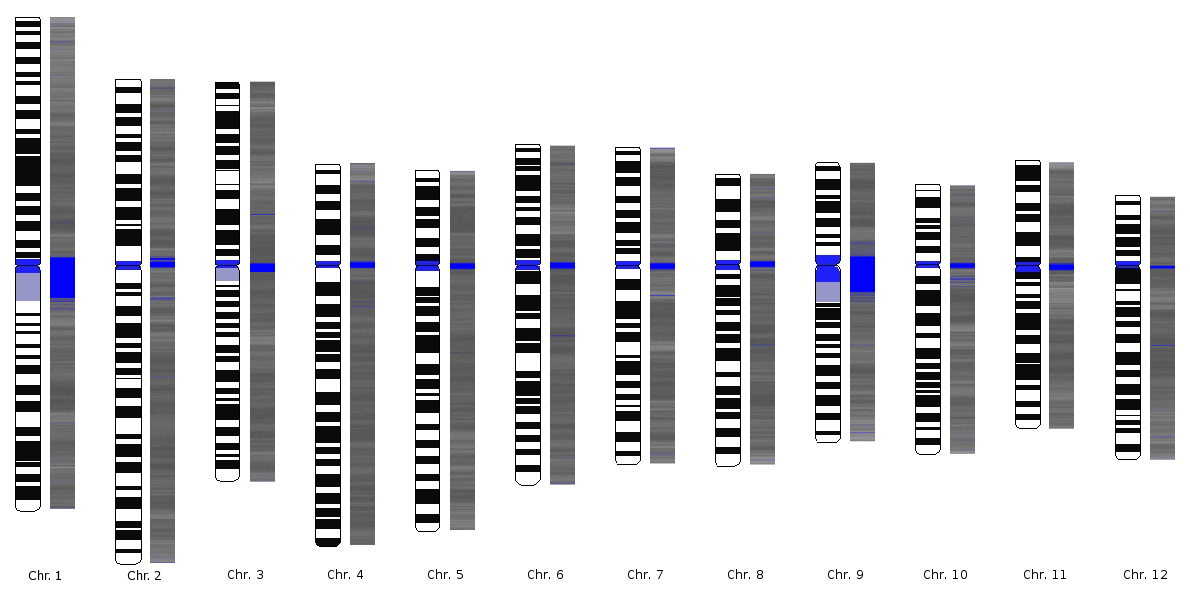Ideograms are a schematic representation of chromosomes. They show the relative size of the chromosomes and their banding patterns. A banding pattern appears when a tightly coiled chromosome is stained with specific chemical solutions and then viewed under a microscope. Some parts of the chromosome are stained (G-bands) while others refuse to adopt the dye (R-bands). The resulting alternating stained parts form a characteristic banding pattern which can be used to identify a chromosome. The bands can also be used to describe the location of genes or interspersed elements on a chromosome.
Below you can see an ideogram of each human chromosome. Next to the known schematic representation we added a chromosome rendered from DNA data. The G-bands, areas with proportional more A-T base pairs, are normally colored black in schematic representations. To compare the schematic ideograms with our rendered chromosomes, we colored the A-T bases black and the G-C bases white. Blue areas in the rendered chromosomes identify bases not known yet.
The results are interesting. When comparing the schematic ideograms with the rendered chromosomes from our project, a significant conformance can be seen. Most black areas on the left side show also black areas on the right side and white areas are also white on the “digital” chromosomes.


